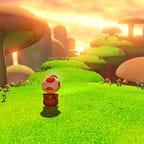Why ‘The Oregon Trail’ is One of the Most Realistic Video Games Ever
It all really boils down to one element
Thanks to the beauty of internet emulators and archives, old video games, websites, and other forms of online content exist far past their normal expiration dates. Take The Oregon Trail, for example. This video game has existed in many forms since 1971, and a quick google search allows users to play it for free in a web browser.
When I taught American expansion to the West this spring, I pulled up The Oregon Trail on a projector to show to my students. Its enduring popularity meant that nearly all of them had at least heard of it, and it was an easy way to compare the allure of the West to American pop culture today. However, I also pulled the game up for one other key reason — it is easily one of the most realistic games I can think of in any genre.
For anyone not especially familiar with the game (or just anyone who wants a refresher), users simulate traveling the Oregon trail in this game. It’s a simulation of going West, and players will start an expedition from Independence City, MO in an attempt to reach the end of the trail. Players can go hunting for food, buy supplies from other travelers, and deal with challenges like fording rivers or fighting off bandits.
Players who choose to simulate this Westward path follow the real journeys of countless Americans in the 1840s. This trail promised health, prosperity, and a fresh start for Americans of all backgrounds, and Oregon’s fertile lands and beautiful scenery beckoned. For the farmers and bankers that the game presents at the beginning, the West was a land of nearly incalculable opportunity.
It wasn’t just the people of the 1840s who viewed Oregon like this, either. American culture has taken the best parts of the West — its promise, grandeur, and possibility—and venerated it in countless games, movies, books, and any other forms of entertainment. The “Western,” genre of movies is perhaps the most uniquely American form of entertainment, and numerous professional sports teams use Western imagery or characters.
And the reason why I think The Oregon Trail is so important is that it takes the romanticism of the West and goes in a completely different direction. It’s possible of course, to reach the end of the trail. But just like the actual settles who travelled this path so long ago, danger lurks in every corner. The game often seems unreasonable — characters in the users’ parties will spontaneously fall ill, or one of the oxen will hurt its leg—but this brutal difficulty mirrors the actual experiences of the West. There were far more cholera cases along these western trails than stories of brave cowboys fighting off danger.
As a historian, this fascinates me. I love that a video game first published more than 40 years ago carries perhaps the best interpretation of the American West. Red Dead Redemption presented beautifully-rendered landscapes and graphics, and its sequel promises to do the same. But it can’t match the realism of suddenly falling ill and dying on the trail for no reason. And that’s for good reason — the realism of traveling along this trail don’t make for a great novel or (usually) a great video game. And that’s completely fine.
I appreciate the allure of the West. The power that this region had to American minds in the 1840s is a huge part of how this nation grew, and the fond memories of this expansion are important to how the United States see itself today. There’s nothing wrong with games like Red Dead that explore the romanticized lawlessness, or movies that show scene after scene of horseback shootouts and chases. As fictional explorations of a historical reality, artistic expression is a good thing.
But if I have the chance to teach this episode of America’s past again, there’s a very good chance that The Oregon Trail will be one of my chief teaching aids. If I look at other games, books, or movies, it will be as examples of how culture has taken the best parts of the West to make money. But this simple game, first published in 1971 and now living on in internet archives, is easily the most realistic take on what Westward expansion actually looked like. Much like The Oregon Trail, it was brutal, difficult, and often deadly.
